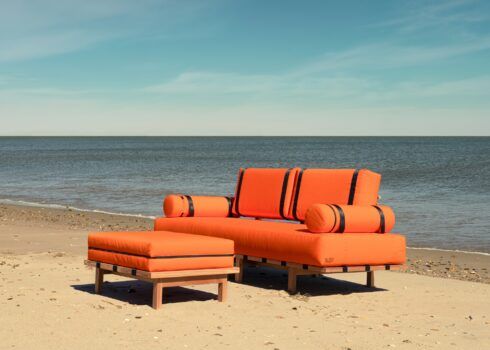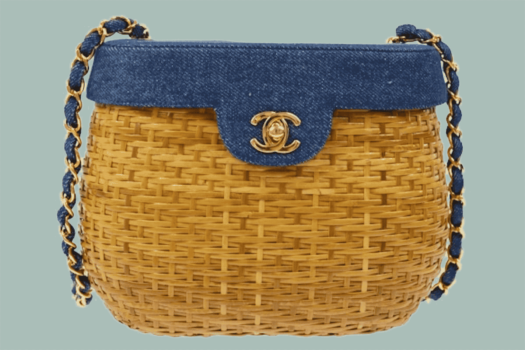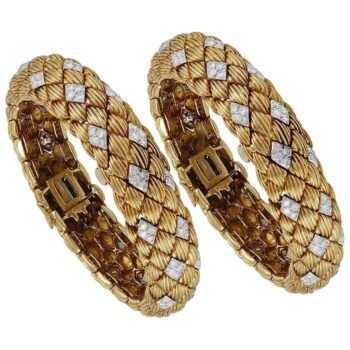
In a Venn diagram of Danish-influenced 1960s American furniture and top-of-the-line console sound systems from the same era, the Clairtone Project G stereo series occupies the sweet spot where technology and design converge.
The Project G1, which began production in 1963 and officially debuted in 1964, featured book-matched Brazilian-rosewood cabinetry that included a tamboured door on top and red-velvet-lined LP storage beneath, as well as never-before-seen rotatable spherical speakers made of aluminum and dubbed “sound globes.” These geometric forms sat atop a chromed-steel beam with a cruciform base reminiscent of those found on Florence Knoll tables and Arne Jacobsen chairs.
Costing just under $2,000 (for comparison, the list price of a Ford Mustang, which also debuted in 1964, was $2,368), the Clairtone Project G’s combination of luxury materials and sleek looks won a silver medal for excellence in design at the Milan Triennial. And the system’s space-age swagger broadcast serious bachelor-pad vibes for early customers like Hugh Hefner, who bought one for the Playboy Mansion, and Frank Sinatra, who gave them as gifts to his Rat Pack pals.

“It was the first high-fidelity system that merged high-style modernism with high-end audio components,” says Ryan Rucker, cofounder of 20cdesign, in Dallas, which is offering a 1964 Clairtone Project G1 for sale on 1stDibs. “Of course, George Nelson had designed Thin Edge cabinet configurations for home stereos [for Herman Miller], with flip-tops and drop fronts. But they didn’t come with record players and amplifiers.”
The Project G came with proprietary amplifiers and speakers, engineered and built by Clairtone, and boasted state-of-the-art Garrard Lab turntables complete with tonearms trimmed with wood. Over the past 30 years, 20cdesign has painstakingly restored both the components and cabinetry of the Clairtone systems it’s had in house. Recently, the San Francisco Museum of Modern Art sourced a rare first-generation Project G, one of only around 300 ever produced, from 20c for its current exhibition “Art of Noise.”
Founded in Canada in 1958, Clairtone was a partnership between Scandinavian-furniture importer David Gilmour and audio engineer Peter Munk, who teamed up with industrial designer Hugh Spencer to create the ultimate home audio system.
In 1966, after the G1 had been on the market for two years, Clairtone launched the dialed-down Project G2, designed by Al Faux. Although similar in appearance to its predecessor, it had smaller speakers; a molded acrylic lid, replacing the tambour door; and a black T-shaped pedestal base made of aluminum. “They wanted to reengineer it to keep it stylish but more efficient to build,” Rucker explains. “The cost of the G1 was out of touch with the average music and design lover.”

The G2 was sold in Macy’s, Marshall Field’s and other department stores, promoted by Dean Martin and featured in director Mike Nichols’s 1967 classic comedy The Graduate. Despite being manufactured in greater numbers, it remains highly desirable among mid-century modern design collectors and celebrities like LeBron James, who tweeted about his acquisition. “The fact that they sell for $30,000 to $40,000 shows how relevant they still are,” Rucker says.
The rare and fully restored Project G1 offered by 20c measures over eight feet in length and includes 18-inch sound globe speakers and a pink-felt-lined storage compartment for records.
Rucker, who has sold dozens of Project Gs over the years, remains besotted with Clairtone. Having discovered his love of space-age design through Eero Arnio’s plastic takes on modernism, including the 1963 Ball chair, Rucker admits he was infatuated from the start. “The first time I saw a Project G, I was mesmerized,” he recalls. “It’s futuristic but still really refined and exquisite — all of the proportions were just right.”





